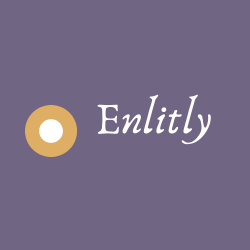
In the fiercely competitive world of small business, success doesn’t emerge by happenstance. It’s a well-thought-out journey that necessitates strategic decisions and unwavering efforts. In this article, Enlitly dives into time-tested strategies that pave the way for small business success online. These actionable insights can serve as a compass for your business’s growth and resilience.
Establish a Strong Brand Identity
The cornerstone of small business success is a robust brand identity. A compelling visual representation and a unique value proposition make your business memorable and credible. Therefore, spend time and resources on formulating a brand identity that resonates with your target audience and distinguishes you from the competitors.
Create a Cost-Effective Marketing Strategy
Optimizing marketing efforts without depleting resources is critical for small businesses. Focus on a marketing strategy that leverages digital channels for maximum reach and engagement. This approach helps manage expenses while reaching a broader audience, thus enhancing brand visibility and customer engagement.
Design a Resilient Online Presence
A robust online presence is vital for your ecommerce business, essential for capturing a wide audience. Effective online marketing strategies, coupled with active social media engagement and a well-optimized website, amplify brand visibility. These elements collectively act as a magnet for potential customers, driving both awareness and conversion.
Master Effective Communication
The glue that holds a business together is effective communication. Whether interacting with customers or managing an internal team, the ability to communicate clearly and efficiently is vital. Open and consistent communication fosters a culture of trust and collaboration, critical elements for achieving business objectives.
Re-Evaluate Your Marketing Strategy Periodically
The only constant in business is change. Therefore, periodic re-evaluation of marketing strategies is essential for keeping the business agile and responsive to market needs and changes. Always be prepared to pivot your marketing strategies to align with current business objectives and market conditions.
Forecast Earnings and Revenue
Being savvy about your numbers is essential for business longevity. Understanding how to project revenue and forecast earnings enables better planning and decision-making. Utilize accounting software and business intelligence tools to gain actionable insights, which in turn guide operational and staffing decisions.
Leverage Modern Technology
The infusion of technology into diverse areas of a business operation is not merely an option but a requisite for scalability and optimization. Sophisticated tools, such as customer relationship management software, offer actionable insights and streamline tasks. Staying updated with the latest technological advancements is thus a strategic imperative for sustained business success.
Streamline Operations With AI
Embracing innovation, particularly automation and AI, provides a competitive edge. These tools reduce manual tasks, drive efficiency, and allow for a focus on core business functions. The adoption of automation tools and AI not only enhances operational efficiency but also ensures that the business stays ahead of the curve.
Sustain a Healthy Cash Flow
Maintaining a healthy cash flow is an elemental aspect of a thriving business model. By diligently monitoring various revenue streams and effectively controlling operational costs, a business positions itself for sustainability and growth. Furthermore, the implementation of a contingency plan provides a safety net, ensuring the business can navigate unforeseen financial challenges while remaining competitive.
Achieving small business success in ecommerce is well within reach for those who approach it with a strategic mindset and a commitment to sustained effort. From establishing a compelling brand identity and mastering revenue projections to embracing automation and fostering effective communication, each facet plays a crucial role in determining your success. Implementing these proven strategies will help your business not just survive but thrive in today’s competitive landscape.
For an all-in-one platform for books, courses, memberships, and communities, visit Enlitly today!



